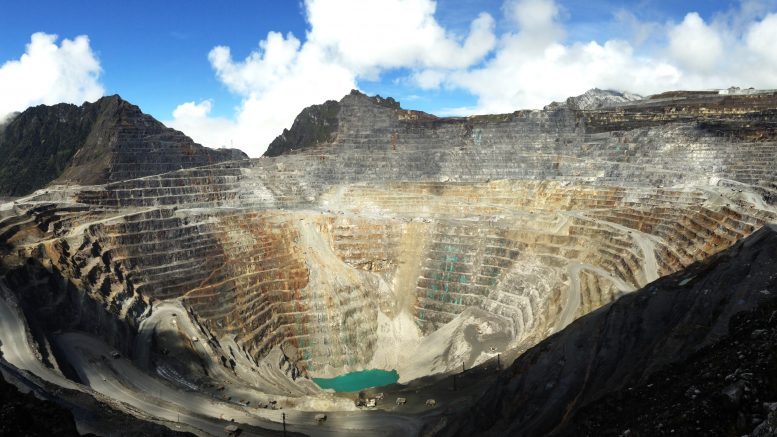VANCOUVER — Simon Jowitt is an associate professor of economic geology at the University of Nevada at Las Vegas, who researches mineral economics, environmental issues, and the use of mining waste as a future resource. The Northern Miner interviewed Jowitt for his long-term views on the planet’s mineral supply.
The Northern Miner: What do you think people mean when they say mineral resources are finite, and why do you take issue with that characterization?
Simon Jowitt: It’s true that natural resources, especially mining resources, are to some extent finite. What I take issue with is how some have tried to cause panic using overly simplistic and misleading estimates of remaining mineral resources.
These statements often take the form of “we only have ‘X’ number of years left for commodity ‘Y.’” They arrive at this estimate by looking at total reserves for a given commodity and dividing by annual demand. The problem is this ignores how mineral exploration actually works. Mining companies don’t drill out the entire orebody right away. They go out, delineate an area to extract, and if that initial extraction is profitable, they proceed with brownfield expansion and grow mineral reserves and resources in the process.

A panorama of Freeport-McMoRan’s Grasberg gold-copper mine West Papua, Indonesia. Photo by Richard Jones.
The Grasberg gold and copper mine in Indonesia is a great example. Both gold and copper reserves have grown alongside the steady growth in production since it began on a commercial scale in the 1980s.
So, my issue isn’t with the claim that mineral resources are finite. They are. It’s with the alarmist and misleading claims that tend to take the form of “commodity ‘Y’ has ‘X’ years left before we run out.”
There are more minerals left to be discovered than people think. We’re pretty damn good at brownfield expansion.
TNM: When thinking about long-term mineral supply, what other factors are there to consider besides technological, economic, and natural? Put differently, is the existence of the mineral and the ability to dig it up the only thing to consider in thinking about mineral resource constraints?

“There are more minerals left to be discovered than people think. We’re pretty damn good at brownfield expansion.”
Simon Jowitt
Associate professor
University of Nevada at Las Vegas
SJ: Certainly not. People continue to look at grade, tonnage, and whether it can be extracted profitably. But we increasingly need to think about what we call “modifying factors” in the economic geology field. That includes the social and environmental impact of mining projects as well as government policy towards these projects. This isn’t to say those factors have never mattered, just that they matter more and more. We’re seeing some deposits that are not being extracted because of these modifying factors.
TNM: Can you “run out” of mineral resources in a market economy? Won’t prices always adjust to clear the market?
SJ: Prices are certainly one factor, but they can only get you so far. Brian Skinner spoke of the mineralogical barrier — for certain commodities, things will become too prohibitively expensive to extract, no matter the demand. That mineralogical barrier might come into play at some point, but it’s centuries away. There are plenty of methods to maintain supply in the meantime. If the price goes up significantly for a certain commodity, people will look at alternative sources such as recycling. There are also deposits that aren’t economic right now, but might be in the future if prices rise significantly. The production of nickel pig iron is an example of that.
But there are more than just economic costs to extracting minerals out of the ground. There are social and environmental costs and government policies that may place a limit on mineral extraction. Without these, yes, prices will always clear the market, but these modifying factors have become increasingly important over the past 50 years.

A drill at Osisko Metals’ historic Pine Point zinc-lead project in the Northwest Territories. Credit: Osisko Metals.
TNM: What role might recycling play in the long-term supply of minerals, especially if we do hit binding resource limits for certain minerals?
SJ: It depends on the mineral or metal in question. We’re already quite good at recycling some metals — copper, iron, palladium and platinum, for example. But the way we use some other metals, it’s very difficult to recycle them. Some of the rare earth elements are especially difficult to recycle because they’re used in such small amounts in their end products, such as cell phones. We don’t have the technology yet to extract those minerals from cell phones. We waste an awful amount of minerals because we cannot recycle the materials from electronics properly.
It’s going to take significant technological breakthroughs and serious policy changes for recycling to grow in importance.
TNM: Do you think the conversation about long-term mineral supply is often confused with that about long-term fossil fuel supply?
SJ: Yes, “peak minerals” is often grouped in with “peak oil.” Again, it goes back to the way these commodities are explored.
Three-dimensional seismic surveys give oil and gas companies a fairly accurate understanding of available resources early on in a project. Mining companies, unfortunately, do not have this luxury. Their methods of delineating resources are less accurate, and therefore those resources get delineated incrementally.
For this reason, as I said before, current reserves and resources are not necessarily indicative of remaining supply.


Be the first to comment on "Interview: No need for alarmism in discussing mineral supply, says Simon Jowitt"